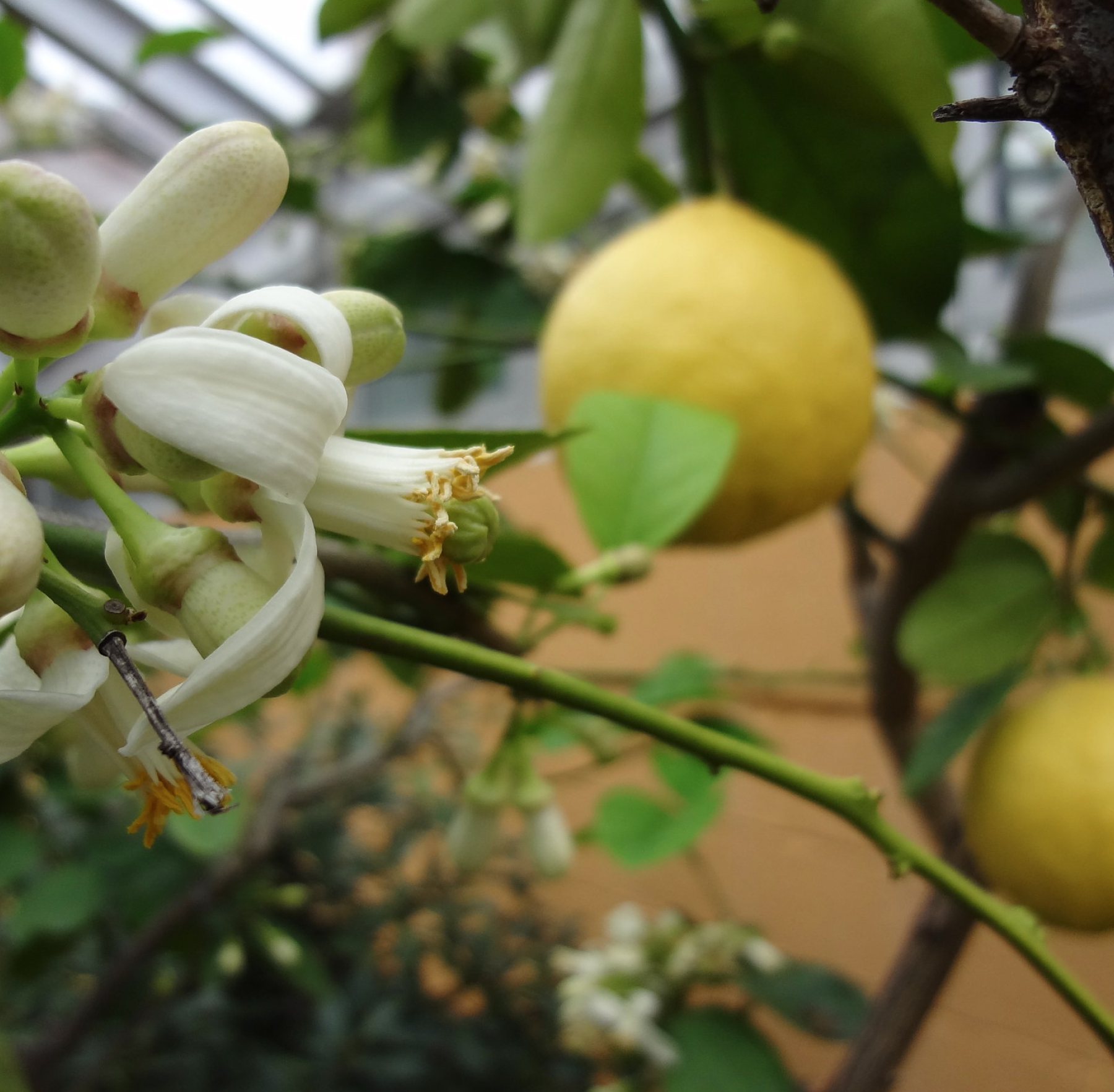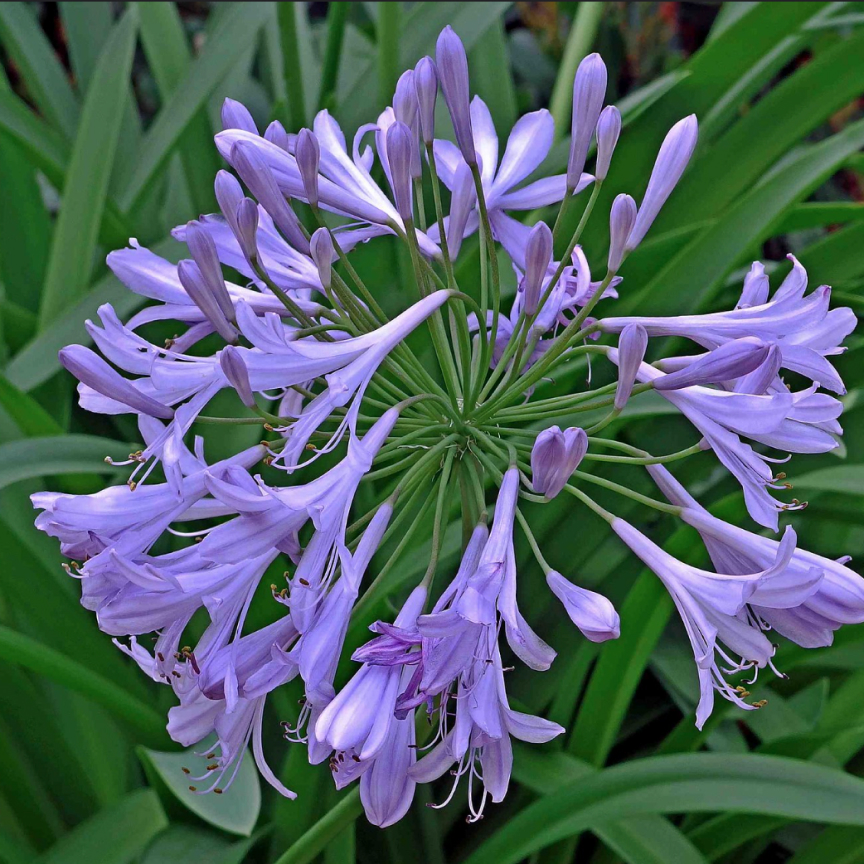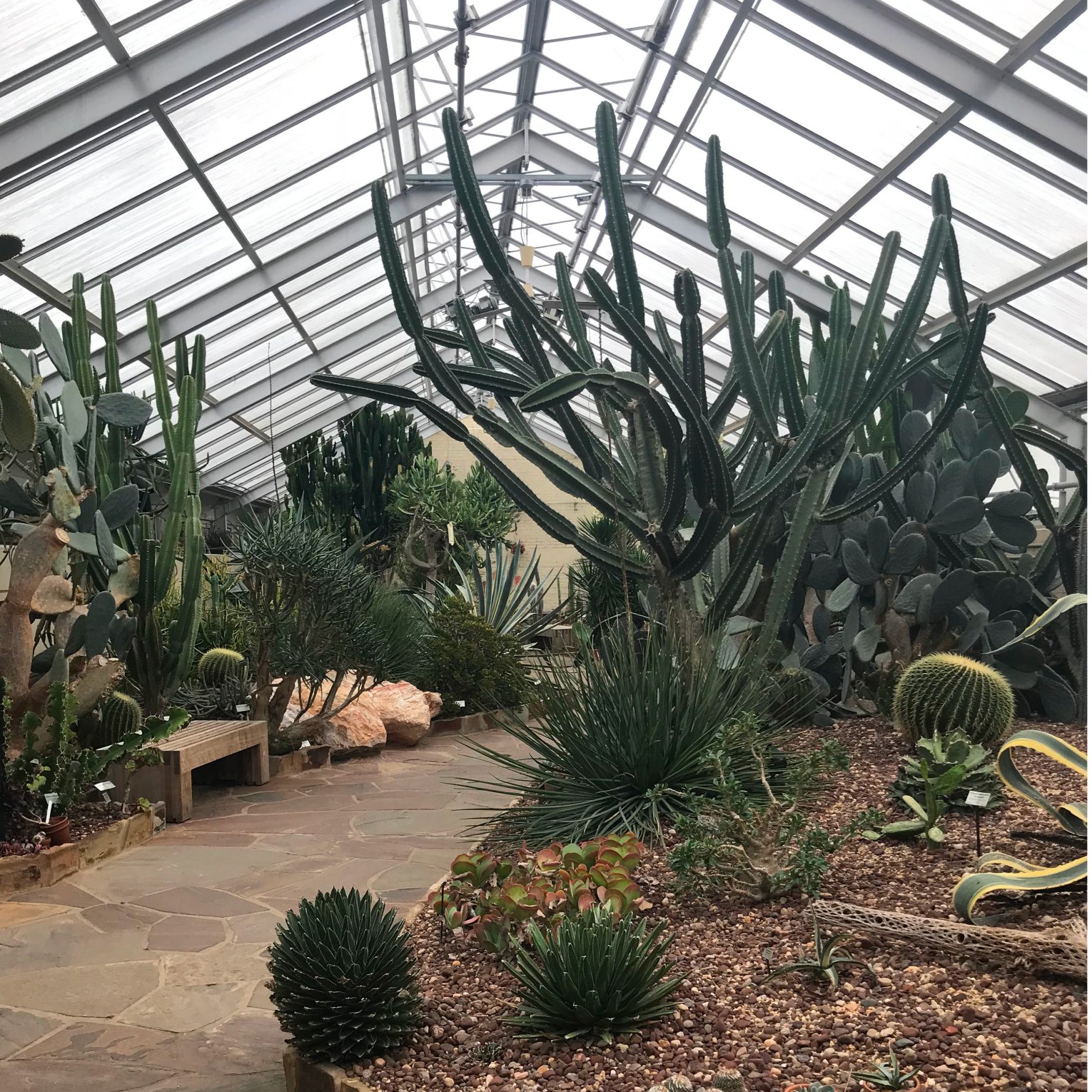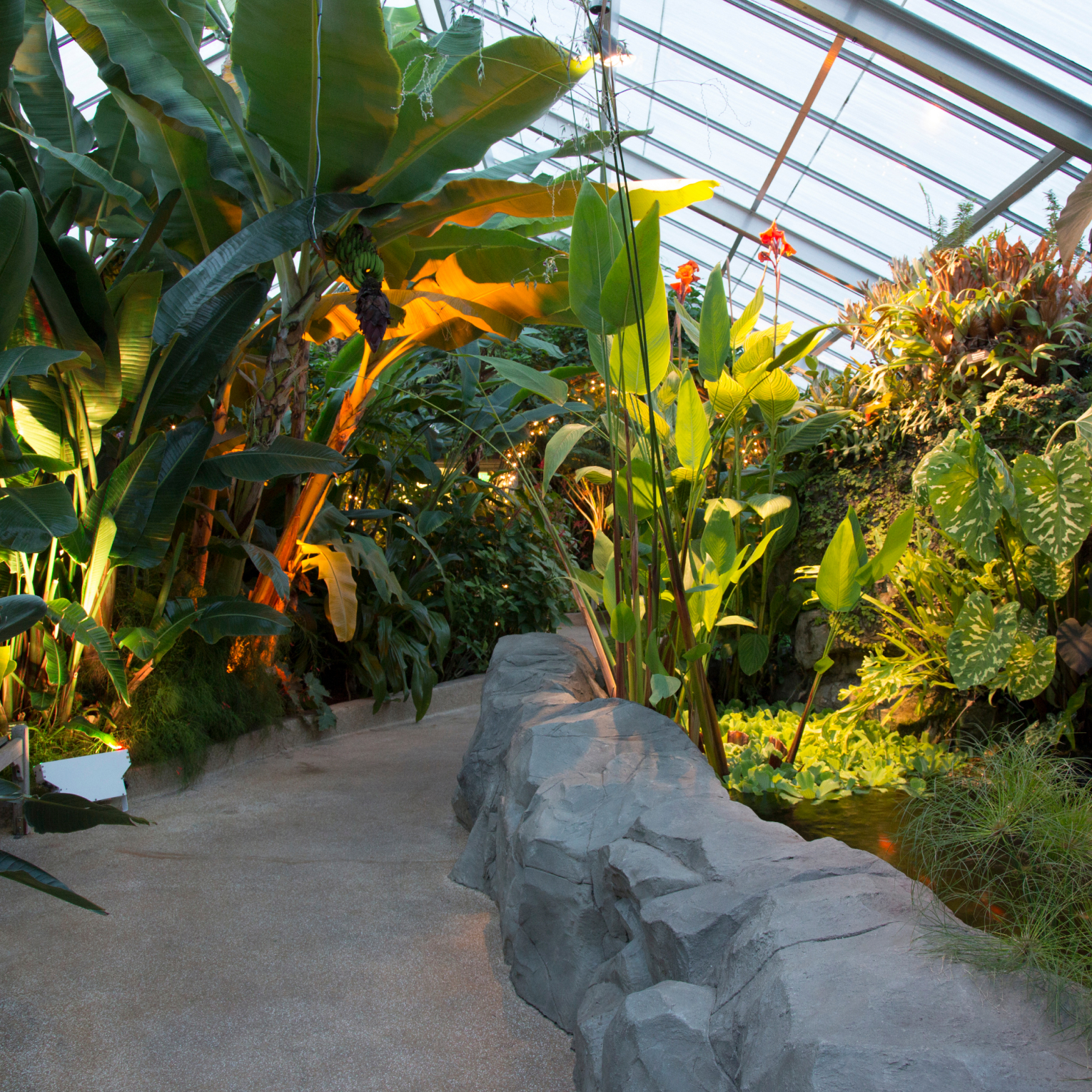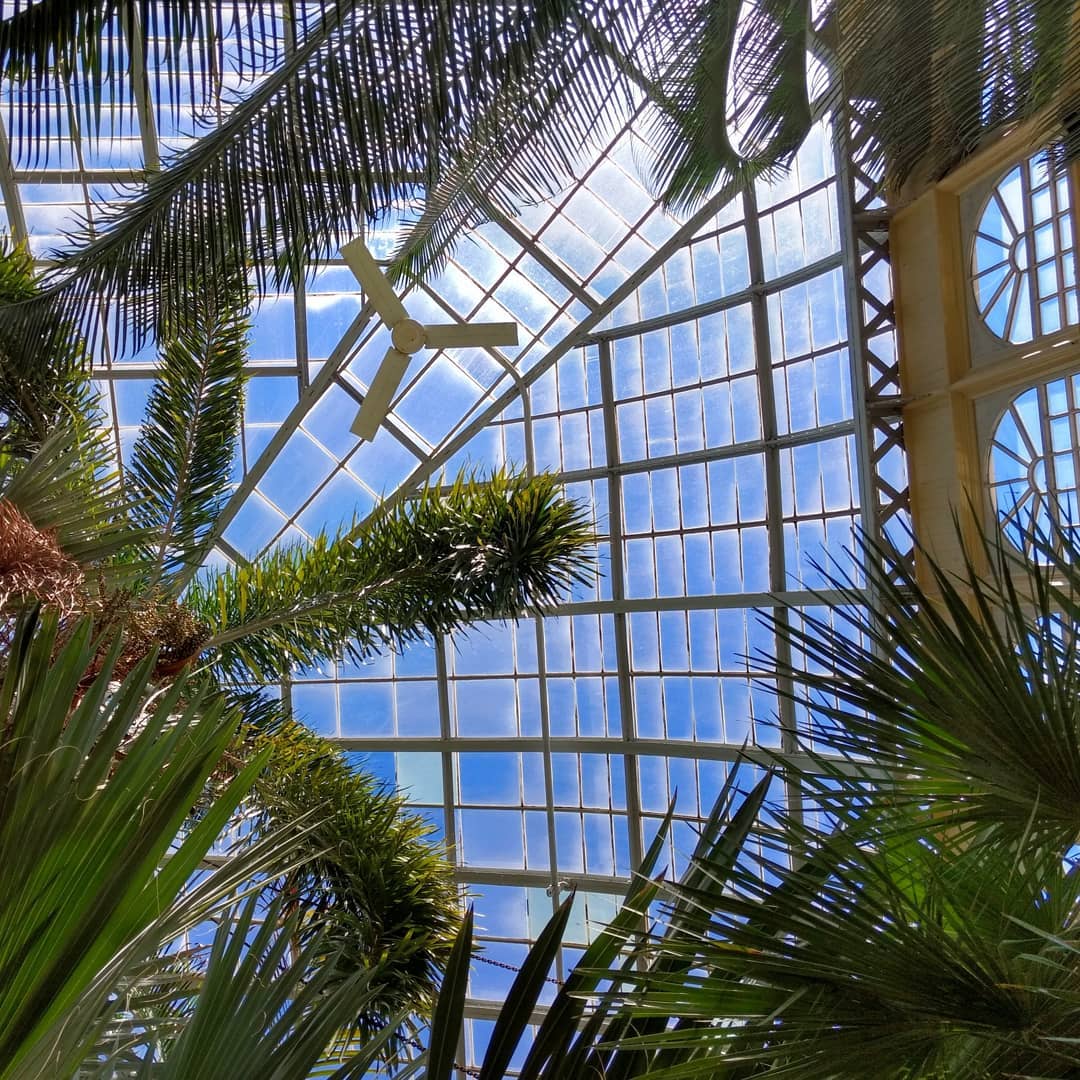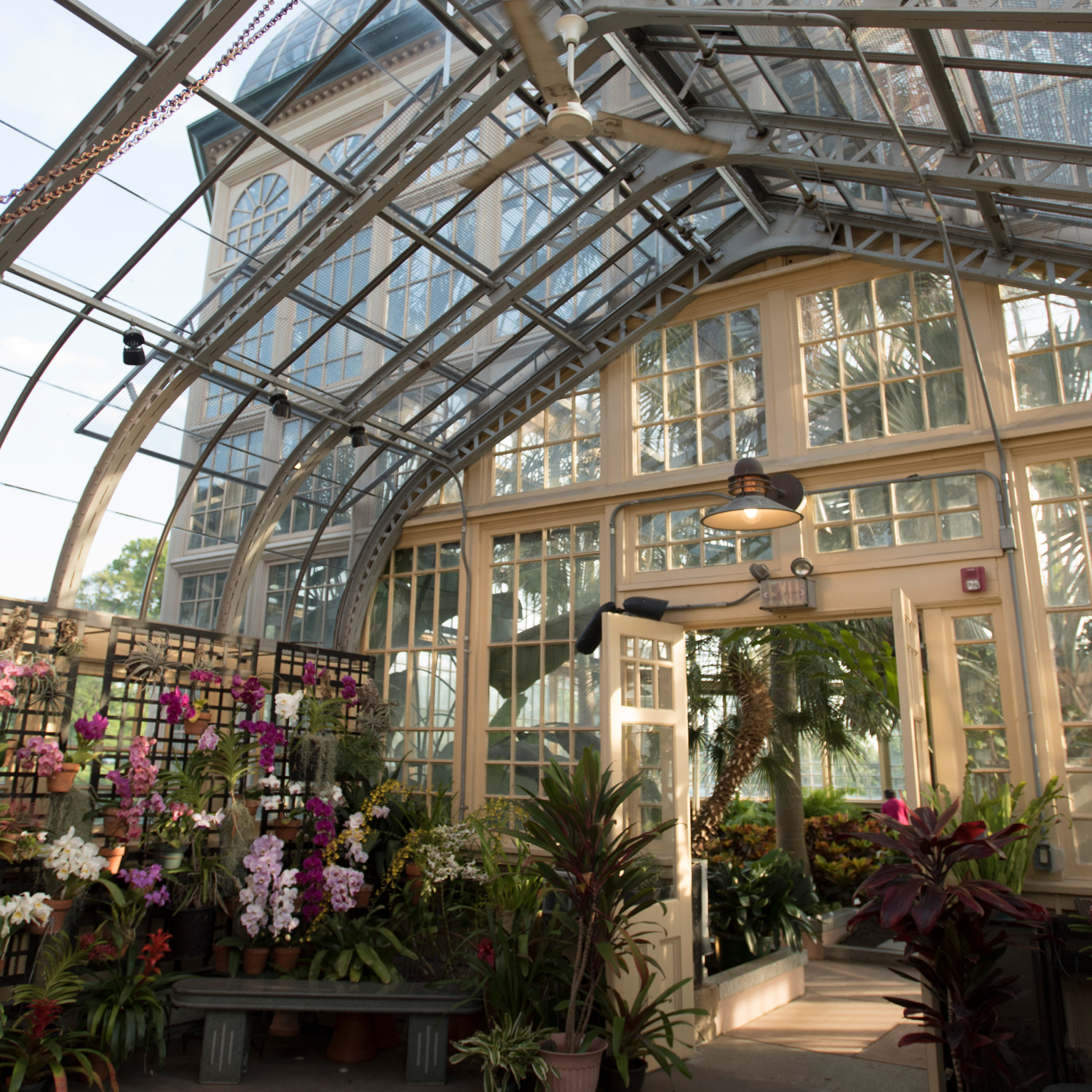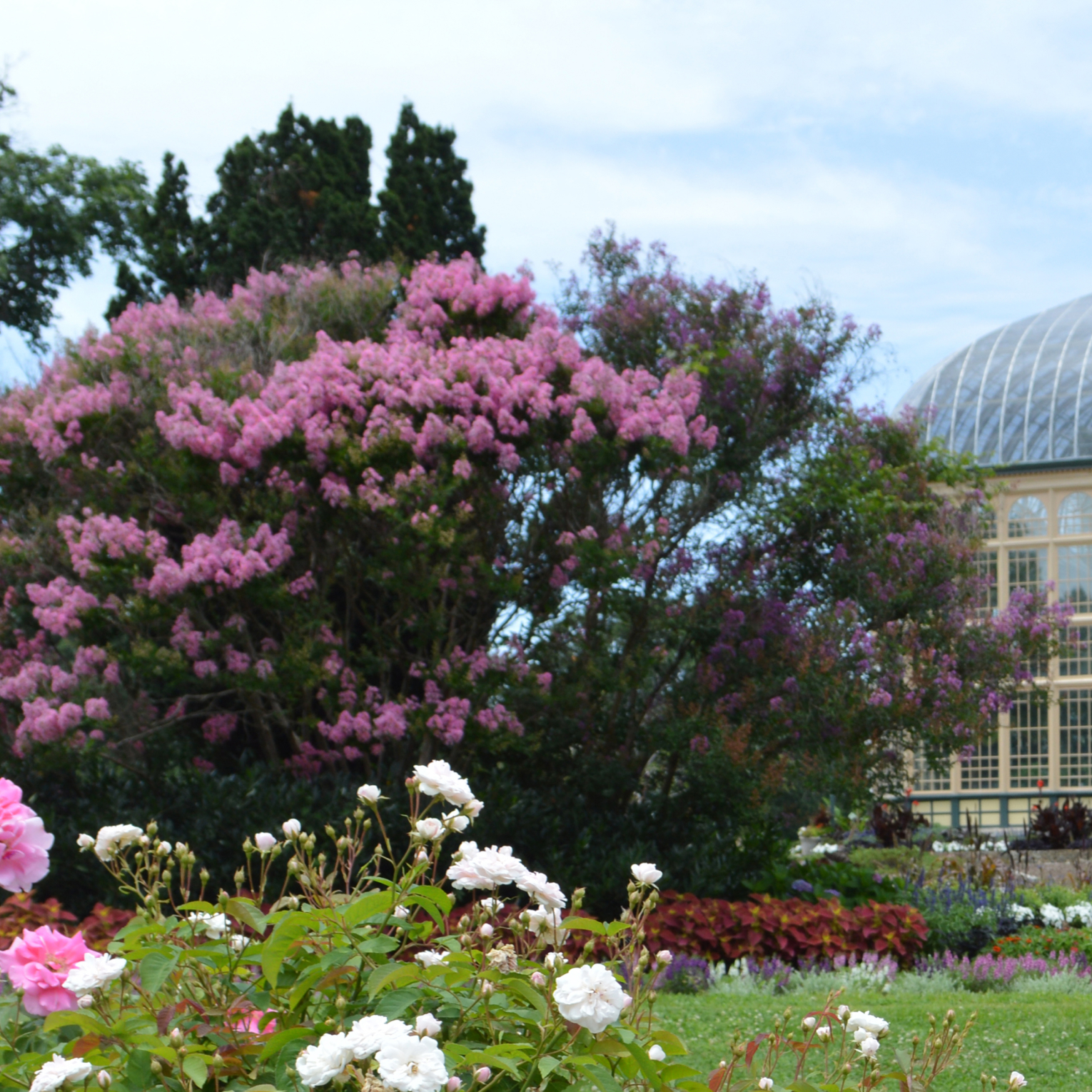Mediterranean House
Upon stepping into the Mediterranean House, you are greeted with the enticing smell of citrus, herbs, and plants with fragrant leaves.
This Conservatory greenhouse showcases a variety of citrus trees, each native to a Mediterranean climate. Members of the citrus family share the unusual trait of rare genetic combinations, making mutations and cross-breeding very likely. Thus, citrus have crossbred both in the wild and with human intervention to create the most desirable fruits.
Plants such as the olive tree (Olea europaea) and the Paper flower (Bougainvillea spp.) showcase the resilience demanded by the Mediterranean climate. Thriving in conditions that prove challenging for many other species, these resilient plants often share common characteristics, like waxy leaves that help retain moisture and a gray cast that aids in capturing sunlight.
Featured in the Mediterranean House
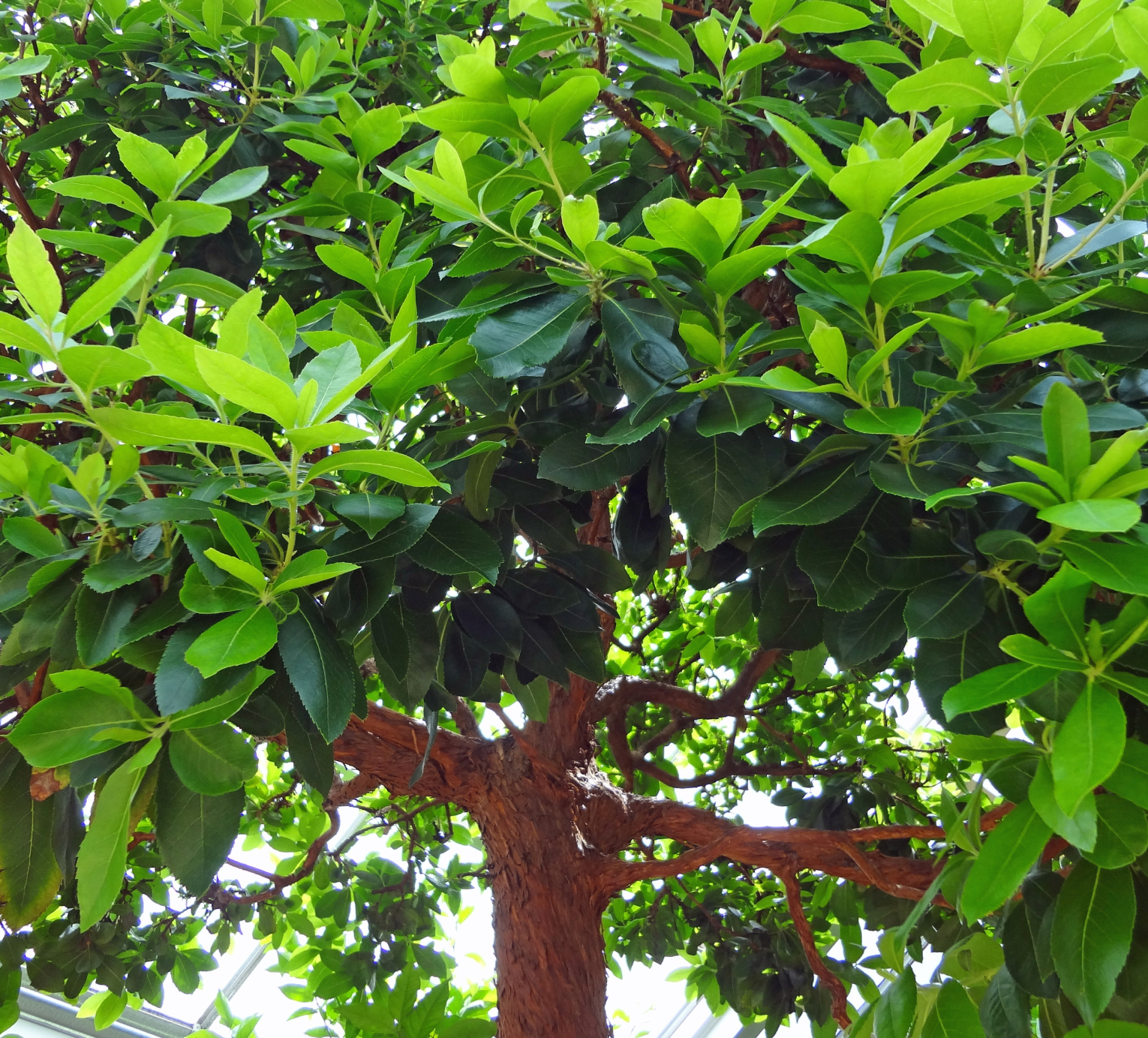
Strawberry Tree
Arbutus unedo
blooms fall to winter
A broadleaf evergreen shrub or small tree that is native to rocky slopes, hillsides, and shrub lands of the Mediterranean and the British Isles. It matures to 10-15′ tall but infrequently grows to as much as 30′ tall.
Mature trunks and branches are covered with grayish-brown bark which peels and flakes to reveal an attractive reddish-brown inner bark.
A relative to the blueberry with similar blooms and fruit. Although the ripe fruits have the same color as strawberries, they unfortunately do not have the same flavor and are exceedingly bland.
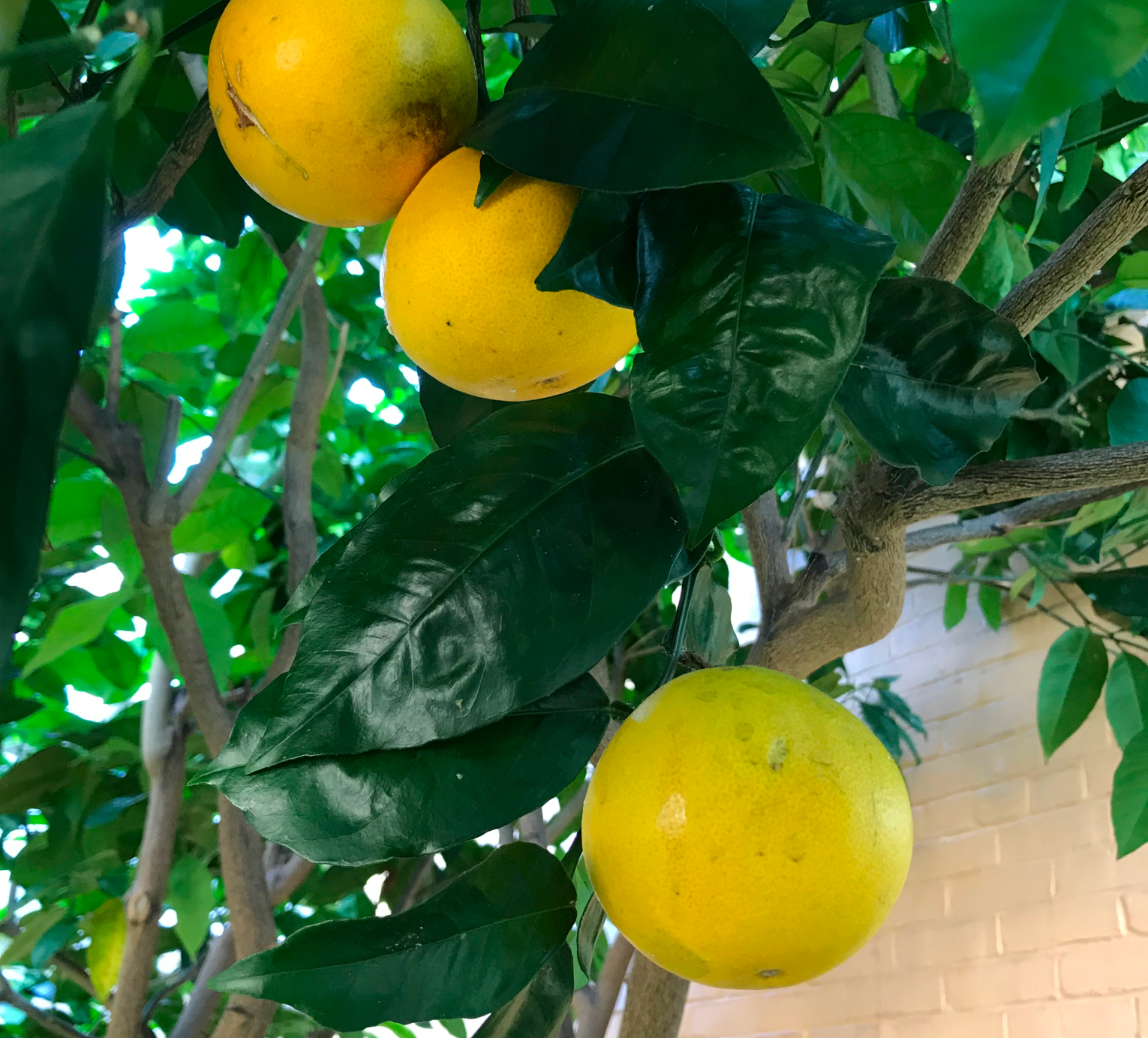
Ponderosa Lemon
Citrus limon x medica
blooming and fruiting occur year-round
This variety of citrus originated in 1887 as a chance seedling grown in Hagerstown Maryland by George Bowman, an American citrus grower. It is a natural hybrid of lemon and citron. It was propagated and marketed in the 1900s as ‘American Wonder Lemon’. The fruit is much larger than a commercial lemon and is typically larger than grapefruit.
The thick, fragrant peel makes marmalades and candies. The fruit can be substituted for grocery lemons, to be eaten fresh and juiced.

Oleander
nerium oleander
blooms early summer to mid-autumn
Also known as the rosebay shrub. Native to North Africa, Spain, Mediterranean to East Asia. Usually occurs around dry or intermittent streams.
Oleander usually grows as a large shrub but can be trained and shaped as a tree. The stems/trunks are gray and extremely tough. The flowers are quite attractive and grow in clusters. Interesting fact: All parts of the plant are poisonous, including the smoke, if burned.
This plant is related to the Plumeria (in the Tropical House) and the Adenum Obesum (in the Desert House).

